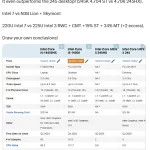Key points
- SARS-CoV-2 continues to circulate and evolve with important genetic and antigenic evolution of the spike protein.
- The objective of an update to COVID-19 vaccine antigen composition is to enhance vaccine-induced immune responses to circulating SARS-CoV-2 variants.
- As the virus is expected to continue to evolve from JN.1, the TAG-CO-VAC advises the use of a monovalent JN.1 lineage as the antigen in future formulations of COVID-19 vaccines.
- In accordance with WHO SAGE policy, vaccination programmes should continue to use any of the WHO emergency-use listed or prequalified COVID-19 vaccines and vaccination should not be delayed in anticipation of access to vaccines with an updated composition.
The WHO Technical Advisory Group on COVID-19 Vaccine Composition (TAG-CO-VAC) meets regularly to assess the impact of SARS-CoV-2 evolution on the performance of approved COVID-19 vaccines. This includes meeting in person approximately every six months to determine the implications of SARS-CoV-2 evolution on COVID-19 vaccine antigen composition and to advise WHO on whether changes are needed to the antigen composition of future COVID-19 vaccines. The twice-yearly evidence review by the TAG-CO-VAC is based on the need for continued monitoring of the evolution of SARS-CoV-2 and the kinetics and protection of vaccine-derived immunity.
In May 2023, the TAG-CO-VAC recommended the use of a monovalent XBB.1 descendent lineage, such as XBB.1.5, as the vaccine antigen. In December 2023, the TAG-CO-VAC advised retaining the use of a monovalent XBB.1 descendent lineage, such as XBB.1.5, as the vaccine antigen. Several manufacturers (using mRNA, protein-based and viral vector vaccine platforms) have developed COVID-19 vaccines with a monovalent XBB.1.5 formulation which have been approved for use by regulatory authorities and introduced into COVID-19 vaccination programmes in some countries. Previous statements from the TAG-CO-VAC can be found on the WHO website.
The TAG-CO-VAC reconvened on 15-16 April 2024 to review the genetic and antigenic evolution of SARS-CoV-2; immune responses to SARS-CoV-2 infection and/or COVID-19 vaccination; the performance of currently approved vaccines against circulating SARS-CoV-2 variants; and the implications for COVID-19 vaccine antigen composition.
Evidence reviewed
The published and unpublished evidence reviewed by the TAG-CO-VAC included: (1) SARS-CoV-2 genetic evolution with support from the WHO Technical Advisory Group on SARS-CoV-2 Virus Evolution (TAG-VE); (2) Antigenic characterization of previous and emerging SARS-CoV-2 variants using virus neutralization tests with animal antisera or human sera and further analysis of antigenic relationships using antigenic cartography; (3) Immunogenicity data on the breadth of neutralizing antibody responses elicited by currently approved vaccine antigens against circulating SARS-CoV-2 variants using animal and human sera, including modelling data; (4) Vaccine effectiveness estimates (VE) of currently approved vaccines during periods of circulation of XBB.1 and JN.1 lineages; (5) Preliminary immunogenicity data on immune responses following infection with circulating SARS-CoV-2 variants; and (6) Preliminary preclinical and clinical immunogenicity data on the performance of candidate vaccines with updated antigens shared confidentially by vaccine manufacturers with TAG-CO-VAC. Further details on the publicly available data reviewed by the TAG-CO-VAC can be found in the accompanying data annex. Unpublished and/or confidential data reviewed by the TAG-CO-VAC are not shown.
Summary of available evidence
- SARS-CoV-2 continues to circulate and evolve; there are genetic changes in important regions of the spike protein of SARS-CoV-2.
- As of April 2024, nearly all (>94%) SARS-CoV-2 genetic sequences in publicly available databases are derived from JN.1, and these variants continue to displace existing XBB lineage variants (e.g. EG.5). This displacement indicates greater fitness of JN.1 derived variants as compared to other circulating SARS-CoV-2 variants in the human population.
- Several JN.1 derived variants (e.g. JN.13.1, JN.1.11.1, KP.2) have independently evolved changes in the spike protein at epitopes involving amino acid residues 346 and/or 456. Substitutions at these amino acid residues have been identified in previous SARS-CoV-2 variants (e.g. R346T in BQ.1 and XBB; F456L in EG.5 and HK.3) and are within epitopes known to be targeted by neutralizing antibodies.
- Given the displacement of XBB lineage variants by JN.1 derived variants, it is likely that, in the near-term, circulating SARS-CoV-2 variants will be derived from JN.1.
- In immunologically naïve animal and human sera, XBB.1.5 and JN.1 are antigenically distinct SARS-CoV-2 variants. In non-naïve animals and humans, post-monovalent XBB.1.5 vaccination sera, with or without recent prior infection, neutralize XBB.1.5 and its derivatives including EG.5, HK.3, HV.1, as well as BA.2.86 and JN.1. However, neutralization titres against JN.1 in published and unpublished studies were typically lower (2-5-fold) than those against the homologous XBB.1.5 immunizing antigen. There are further reductions in cross neutralization of JN.1 variants with F456L and/or R346T substitutions.
- Secondary analysis of published immunogenicity data demonstrates that an additional vaccine dose with an updated vaccine antigen results in an average 40% increase in neutralizing antibodies to that variant as compared to vaccines with a previous vaccine antigen. Using statistical modeling, the predicted additional effectiveness of a vaccine dose with an updated vaccine antigen may be approximately 23-33% against severe disease as compared to a previous vaccine antigen and 11-25% against symptomatic disease.
- In a context of high infection- and vaccine-derived immunity in the population, contemporary vaccine effectiveness (VE) estimates are mostly relative (rVE), rather than absolute (comparing vaccinated to unvaccinated individuals), and demonstrate the added protection of recent vaccination over and above pre-existing infection- and vaccine-derived immunity:
- Bivalent (index virus and BA.1- or BA.4/5) mRNA vaccines and a Beta-based protein vaccine continue to offer protection against severe disease during periods of XBB descendent lineage circulation. Protection against symptomatic disease and infection is lower and wanes more rapidly over several months.
- Monovalent XBB.1.5 vaccines were introduced into some vaccination programmes in the last quarter of 2023. Protection against severe disease during periods of XBB descendent lineage circulation is high during the first three months after vaccination, but protection against symptomatic disease is lower.
- There are fewer studies estimating rVE for the monovalent XBB.1.5 vaccines during periods of JN.1 descendent lineage circulation. These initial studies show some additional protection offered during the first three months after vaccination, but point towards a slight reduction in VE against JN.1, as compared to XBB.1 lineage variants, for protection against severe and symptomatic disease. These observations are consistent with reductions in neutralizing antibody titres observed in preclinical and clinical immunogenicity studies of monovalent XBB.1.5 vaccinee sera against JN.1 derived variants.
- Preclinical data shared confidentially with the TAG-CO-VAC by vaccine manufacturers show that immunization of naïve mice, as well as mice previously immunized with SARS-CoV-2 variants, with monovalent JN.1-containing vaccine candidates elicits higher neutralizing antibody responses to JN.1 and its emerging descendent variants, as compared to responses elicited by currently approved vaccines. A single immunogenicity study in humans of a monovalent JN.1-containing vaccine candidate suggests that a JN.1 vaccine antigen is likely to produce higher neutralising antibodies to co-circulating JN.1 variants (e.g., KP.2) than an XBB.1.5 or related vaccine antigen.
READ ALSO: Illegal gold mining in C’River National Park: Part played by indigenes and consequences
The TAG-CO-VAC acknowledges several limitations of the available data:
- There are persistent and increasing gaps in genetic/genomic surveillance of SARS-CoV-2 globally, including low numbers of samples sequenced and limited geographic diversity. The TAG-CO-VAC strongly supports the establishment of the WHO Coronavirus Network (CoViNet) to help address this information gap.
- The trajectory of further SARS-CoV-2 evolution indicates that JN.1 will likely be the progenitor of SARS-CoV-2 variants, in the near term. However, the timing, specific mutations and antigenic characteristics, and the potential public health impact of newly emerged (e.g. KP.2) and future variants remain unknown. The TAG-CO-VAC strongly supports the ongoing work of the TAG-VE.
- Although neutralizing antibody titres have been shown to be important correlates of protection from SARS-CoV-2 infection and of estimates of vaccine effectiveness, there are multiple components of immune protection elicited by infection and/or vaccination. Data on the immune responses following XBB or JN.1 descendent lineage infection or XBB.1.5 vaccination are largely restricted to neutralizing antibodies and data on other aspects of the immune response, including cellular immunity, are limited.
- Immunogenicity data against currently circulating SARS-CoV-2 variants are not available for all COVID-19 vaccines.
- Estimates of rVE against recently circulating SARS-CoV-2 variants, including XBB or JN.1 descendent lineages, are limited in terms of the number of studies, geographic diversity, vaccine platforms evaluated, populations assessed, duration of follow-up and comparative estimates for monovalent XBB.1.5 vaccines versus other formulations delivered during the same time period.
Recommendations for COVID-19 vaccine antigen composition
As of April 2024, nearly all circulating SARS-CoV-2 variants reported in publicly available databases are JN.1 derived variants. As virus evolution is expected to continue from JN.1, future formulations of COVID-19 vaccines should aim to induce enhanced neutralizing antibody responses to JN.1 and its descendent lineages. One approach recommended by TAG-CO-VAC is the use of a monovalent JN.1 lineage (GenBank: OY817255.1, GISAID: EPI_ISL_18538117, WHO Biohub: 2024-WHO-LS-001) antigen in vaccines.
The continued use of the current monovalent XBB.1.5 formulation will offer protection given the neutralizing antibody responses to early JN.1 descendent lineages, and the evidence from early rVE studies against JN.1. However, it is expected that the ability for XBB.1.5 vaccination to protect against symptomatic disease may be less robust as SARS-CoV-2 evolution continues from JN.1. Other formulations and/or platforms that achieve robust neutralizing antibody responses against currently circulating variants, particularly JN.1 descendent lineages, can also be considered.
In accordance with WHO SAGE policy, vaccination programmes should continue to use any of the WHO emergency-use listed or prequalified COVID-19 vaccines and vaccination should not be delayed in anticipation of access to vaccines with an updated composition. WHO stresses the importance of access to and equity in the use of all available COVID-19 vaccines.
Further data requirements and considerations
Given the limitations of the evidence upon which the recommendations above are derived and the anticipated continued evolution of the virus, the TAG-CO-VAC strongly encourages generation of data on immune responses and clinical endpoints (i.e. VE) on the performance of all currently approved COVID-19 vaccines against emerging SARS-CoV-2 variants, and candidate vaccines with an updated antigen over time.
As previously stated, the TAG-CO-VAC continues to encourage the further development of vaccines that may improve protection against infection and reduce transmission of SARS-CoV-2.






